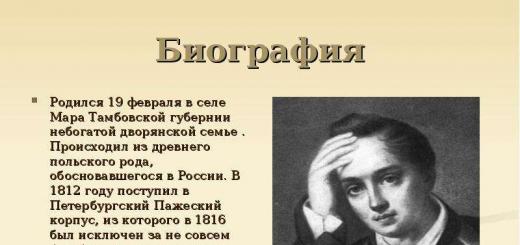— Textbooks and manuals — NATURE AND RESOURCES OF CHUKOTKA
Chapter 5. MINERAL RESOURCES
21. Minerals and their classification
Minerals have been used by humans since ancient times. Even in the Paleolithic, i.e. many tens of thousands of years BC, primitive used minerals such as chalcedony, quartz, obsidian, serpentine, amber and many others to make tools and utensils. Later, people learned to use clay for pottery and building stone for building houses. About 25 thousand years BC. man already knew gold, and 12 thousand years ago he began to use copper ores. Products made of lead, dating back to 6 thousand BC, were discovered by archaeologists in Turkey, and products made of tin and zinc served people more than 3,500 thousand years ago. The emergence of ancient Egyptian, ancient Greek, Scythian, ancient Slavic and other cultures was closely associated with the involvement in the use of various types of minerals. The origin and development of industry, the emergence of more and more new branches and the entire subsequent history of human development are inextricably linked with the development of productive forces and, first of all, with the identification and development of mineral resources. This process of increasing use of minerals continues today, and, of course, will continue in the future. Chukotka is very heterogeneous geologically; its different regions were formed in different time and are distinguished by their mineral resources. Thus, in the Chukotka fold system, which is one of the important ore provinces of the world, the leading place is occupied by deposits of gold, tin and tungsten formed in the Mesozoic during the uplift of sedimentary strata. In the Oloi folded zone of Paleozoic age, located in the extreme west of the Chukotka region Autonomous Okrug, gold, copper, molybdenum, chromium and nickel are common. The northern section of the Okhotsk-Chukotka volcanic belt is rich in various deposits of mercury, gold, silver, copper, tin and ornamental stones. The Anadyr-Koryak region is dominated by deposits of chromium, nickel, mercury, platinum group elements, copper and molybdenum, gold, zeolites, coal and oil. The most ancient Eskimo massif contains reserves of building materials - graphite, gold and polymetals.Geography and relief
The Chukotka Autonomous Okrug is located in the extreme northeast of Russia, more than half of the territory is beyond the Arctic Circle. The territory of the district borders on:
- Kolyma (in the west);
- Magadan region and Yakutia (in the west and southwest);
- Kamchatka region (in the south).
The district is washed by the waters of the Arctic Ocean (in the north), the Bering Strait (in the east), as well as the East Siberian, Bering and Chukchi seas. The district includes the islands of Wrangel, Ratmanov, Gerald, etc.
Figure 1. Landscape of the Chukotka Autonomous Okrug. Author24 - online exchange of student works
The southern border of Chukotka runs along the watershed of the Anadyr River and individual rivers in the Koryak Highlands.
The total area of the territory is more than 720 thousand square meters. km.
The main landscapes were formed in ancient times and have undergone virtually no changes:
- The Anadyr Lowland is a heavily swamped central part of the district;
- Anadyr Plateau – located to the northwest of the lowland of the same name; they diverge from him river basins and the most important ridges
- Koryak Highlands - located in the south of the district;
- Yukaghir Plateau - occupies the southwestern part of the district, heights reach from 500 to 700 m;
- The Vankarem and Chaun lowlands stretch along the sea coasts in the north. There are an abundance of lakes here, the area is very swampy.
Finished works on a similar topic
- Coursework 440 rub.
- Essay Natural features and resources of the Chukotka Autonomous Okrug 270 rub.
- Test Natural features and resources of the Chukotka Autonomous Okrug 220 rub.
The relief of the peninsula consists of hills (dome-shaped hills) with heights of up to 700 m. Highest point Chukotka – 1853 m located on the Anyui Highlands.
Note 1
On the territory of Chukotka there is a lot of unique modern and relict ice, represented by thick sheet deposits, underground ice rock glaciers, as well as ice veins with a length of up to 50 m.
Climatic conditions
The climate of Chukotka is harsh. Climatic conditions are determined by the monsoon circulation. There are two seasons: a long frosty period and a short warm one. In the interior mountainous regions, the climatic conditions are sharply continental. On the coast, humid, cold, sea air predominates.
The proximity of the Arctic Ocean creates high humidity, cloudy weather and fog. The closer to the ocean, the more severe the weather conditions become.
Winter lasts up to 10 months a year. At this time, the continent cools significantly. Winter is dry and sunny. WITH Pacific Ocean Sometimes warm weather breaks through with snowfalls and blizzards.
During the warm period, wet cold masses move from the ocean to land, forming the summer monsoons.
The average January temperature is -40º C. The average July temperature ranges from +5º C to +13º C. Sometimes the temperature can rise to +30º C.
The soils are permafrost everywhere.
Characteristic features of shelf seas are storms, heavy ice conditions, fogs, and strong tidal currents.
Natural resources
Water resources. The district's rivers belong to the sea basins of the Pacific and Arctic oceans. Most of the rivers have been poorly studied. TO large rivers include: Anadyr (with its tributaries Belaya, Tanyurer, Main); Big Anyui and Small Anyui, Great. Many of the rivers freeze to the bottom. Most belong to mountain rivers. The largest lakes: Pekulneyskoye, Elgygytgyn, Krasnoe. The lakes are predominantly of thermokarst origin. There are deposits of mineral thermal waters (Lorinskoye, Chaplinskoye and Dezhnevskoye deposits). Seas of Chukotka: East Siberian (the coldest of all the seas in the district); Chukchi Sea (most of the year it is covered with floating ice; in the fall, due to stormy winds, hummocks often form); Bering Sea (the warmest sea in Chukotka).
Minerals. The subsoil of the district is rich in reserves of platinum group metals (Anadyr-Koryak system), gold (Mayskoe gold-sulfide deposit, Shmidtovsky, Iultinsky, Chaunsky districts), silver, tin (Pyrkakai stockwork deposits), tungsten (Chaunsky district), copper, mercury, oil , gas (oil and gas basins - East Khatyr, Anadyr, North Chukotka, South Chukotka, East Siberian), hard and brown coal (Upper Alkatvaam deposit), etc. Deposits of chromium, molybdenum, bismuth, boron, titanium, beryllium, lithium, arsenic, iron, antimony, cobalt, nickel, zeolites, precious and semi-precious stones (garnet, demantoid, beryl, amethyst, topaz, axinite, rock crystal, etc.), ornamental stones (chalcedony, agate, jasper, rodingite , listvenite, gabbro, etc.). The explored mineral resource potential of the district is one of the highest in the Far East.
Construction Materials. Deposits of mineral building materials are represented by the following types of raw materials: building sands, expanded clay, brick and sand-gravel mixtures, building stones, carbonate rocks for building lime.
Bioresources. Marine hunting resources are significant (minke whales, fin whales, beluga whales, killer whales and other cetacean mammals; bearded seals, walruses, striped seals, ringed seals and other pinnipeds). Deep processing of raw materials (thymus, lard, adrenal glands, spleen and other organs of sea animals) is carried out biologically active substances(BAV). Fishing (tuna, shrimp, cephalopods, pollock, cod, large crustaceans) and reindeer husbandry are developed.
Hunting Resources. The most valuable commercially are: wild reindeer, elk, brown bears, sable, red fox, arctic fox, wolverine, wolf, muskrat, American mink, white hares, ermines, and white partridge.
Flora and fauna
Chukotka Autonomous Okrug is a region of tundra, forest-tundra and arctic deserts. The territory is dominated by low-growing tundra vegetation.
Arctic deserts are located on Wrangel Island and on the mountain tops. The vegetation cover is represented by sedge-tussock and shrub-moss representatives.
Island forests with a predominance of poplar, larch, birch, Korean willow, alder, etc. grow in river basins.
The forests of Chukotka are mainly home to more than 35 species of mammals: brown and polar bears, arctic fox, fox, wolf, wolverine.
The avifauna (170 species) is represented by partridges, geese, ducks, and swans. Guillemots, eiders, and gulls live on the coast.
Wide variety of fish. In terms of commercial use, halibut, large-sized pollock, cod, flounder, navaga, etc. are of value.
Characteristics of mineral resources of the Chukotka Autonomous Okrug
The Chukotka Autonomous Okrug has significant mineral reserves, many of which are still waiting to be discovered. On the territory of the district there are deposits of such minerals asoil, natural gas, gold, tin, antimony, tungsten and mercury.Tungsten and tin are often found together. The main tin-bearing rock is cassiterite ore. Tin mining is carried out in the Iultinsky and Chaunsky regions of Chukotka. Gold is mined in the Bilibinsky and Chaunsky regions. Coal in Chukotka for the internal needs of the district is mined at the Anadyrskoye lignite and Beringovskoye coal deposits. And in the Lorinsky district, marble, construction sands and sand-gravel mixtures are mined.
Mineral resource | Characteristic | Usage: |
Coal | Black, shiny, hard, brittle, turns into coal dust, heavier than water, burns. | Fuel. |
Brown coal | Clay matter, flammable, occurs in layers among sedimentary rocks, and is formed from plant residues. | Fuel. |
Natural gas | Gases that can burn are found in rock voids. | The cheapest and most convenient fuel. |
Tin ores | Numerous minerals containing tin. Do not oxidize, are not flammable. It melts easily, is a ductile, malleable metal, silvery-white in color. | Canning industry. Manufacturing of brass, dyes. |
Gold | A noble metal of rich yellow color with a characteristic shine. in its pure form it is a very soft metal, does not oxidize, is heavy, and is not flammable. | Jewelry. |
Oil | A flammable, dark-colored, oily liquid with a pungent odor, flammable. | Kerosene, gasoline, petroleum jelly, medicines, fuel oil, technical alcohol, plastic, fibers for making fabrics. |
Tungsten | The metal is dark gray in color, very heavy, brittle and refractory. It occurs in the form of a black or gray powder. | Steel production. Painting glass and porcelain red and blue. Colors materials and imparts fire resistance. |
Mercury | Liquid heavy metal silvery-white in color, found in nature yellow color. Mobile. Poisonous. Oxidizes. | Thermometers. |
Antimony | Poisonous bluish-white metal. Found in the form of nuggets. | Dye for blackening hair, eyebrows and eyelashes. Typographical business. |
Marble | Modified limestone. Rock. A hard mineral, white and variegated, easily polished, non-flammable, non-melting, and non-conductive. | Sculpture, construction. |
Sand | Rock, consists of grains from 0.05 mm to 2 mm, free-flowing, non-flammable. Colors: black, green, yellow, white, reddish. | Construction, glass. |
Sand and gravel mixture (SGM) | A natural mixture of sand and gravel in different proportions. Granular, free-flowing, non-flammable, does not oxidize. Color : brown, yellow, light yellow, brown, light brown. | Men at work. |
Prepared by: Fedorova A.
The unexplored and harsh Chukotka region inexplicably attracts and fascinates. You cannot treat her indifferently. Anyone who has ever visited those lands will never forget its greatness. The Chukotka Plateau evokes strong emotions, leaves vivid impressions in the memory and changes the spatial parameters that determine the rules of life. The appearance of this region was formed in
The pristine landscape has been preserved here to this day: unique expanses of lowlands, relief outlines of archipelagos and coastlines. The Chukotka Highlands are increasingly attracting specialists with historical and natural structures. Over the past few years, there has been active Scientific research in the field of tourism and recreation. The tourism industry is developing fruitfully: ski, water, extreme and adventure tours, as well as hunting, fishing and swimming in hot mineral springs.
Climate

Despite the harsh climatic conditions, people continue to admire Chukotka District. Almost all 9 months of the year there are heavy snowfalls and strong winds. The Chukotka Highlands are distinguished by frosty winters with temperatures down to -30 o C. The climate here is subarctic.
In summer, the region is cold, there are constant heavy rains, and there is snow in places. Regardless of the time of year, snowstorms hum and frosts crackle. Permanent permafrost is explained by the merger of two oceans with different atmospheric circulation. The Autonomous Okrug is distinguished by the most dramatic climatic conditions(few sunny days, strong winds, hurricanes, storms).
Chukotka landscapes
The Chukotka Plateau delights with its pristine virgin beauty. The nature here is truly unique and attracts with chozeniy groves, stone kekurs (rocks peeking out from under the water surface) and hot springs. You can admire it indefinitely aurora and whale migration. The region is distinguished by relict ice: ice veins, strata deposits and rock glaciers - large underground ice.

During excavations, archaeologists often discover ancient remains of glaciers and cave blocks. Another feature of the Chukotka region is the shelf seas, which are valuable natural resources. The East Siberian Sea is considered the coldest, the water in which rarely rises to +2 o C. The warmest is the Bering Sea.
Lakes Krasnoye, Pekulneyskoye and the crater lake Elgygytgyn can also be called a decoration of the region. In river valleys, alder and birch trees grow in talik areas. They are found mainly near the Anadyr basin. The amazing Chukotka Plateau is characterized by several important factors - a relief cut through valleys and deep seas (the Arctic and Pacific oceans).
Animal and plant life
The extreme climate did not become an obstacle to the life and development of flora and fauna. There are more than 900 plants on the territory of the Chukotka Autonomous Okrug. Lingonberry, blueberry, dwarf cedar and alder bushes grow on Chukotka soil. In the river valley you can find black and red currants, birch, and the area boasts a variety of lichens (more than 400 species).
The Chukotka Highlands are famous for their unique fauna. Found in local forests such as polar bear, bighorn sheep, as well as 24 species of birds and marine life (blue and gray whales, fin whale, minke whale, narwhal). The land is rich in ermine, sable, arctic fox, reindeer, wolves, mink and others. The area is home to amazing birds (tundra partridges, swans, ducks, guillemots, seagulls) and insects (midges, mosquitoes, horseflies).

The Bering Sea is filled with various types of fish, as well as shrimp, crabs and shellfish. In the reservoirs you can find burbot, salmon, smelt, pike, etc. There are nature reserves in the district: “Tundrovy”, “Wrangel Island”, “Omolonsky”, “Avtotkuul”, Beringia”, “Chaunskaya Bay”.
Conclusion
Chukotka Highlands - region permafrost. The district is interesting for its natural resources, as well as tourist orientation. The previous governor Abramovich significantly improved the mountain lowlands by building an entertainment center and a museum with archaeological, ethnographic, paleontological and mineralogical collections.
The current authorities, represented by Kopin Roman, are actively engaged in social sphere: healthcare, education and social support. Both leaders made the maximum contribution to the development of PrJSC. Of course, for now the region is unsuitable for tourist recreation, but there is still more to come...










